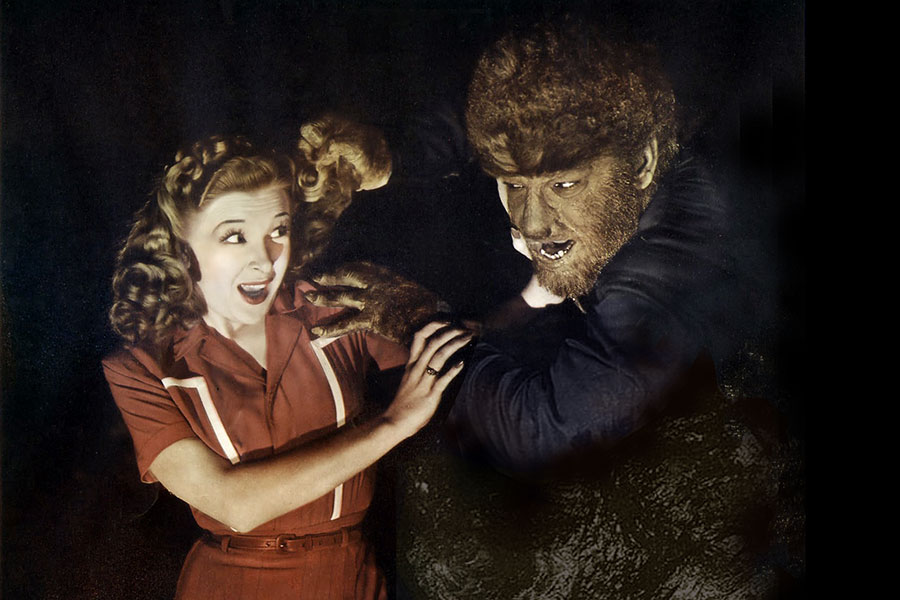Rabies is a contagious and fatal malady, infecting only mammals, and transmitted primarily through the saliva of the infected animal. It causes madness and convulsions in dogs and other afflicted creatures. Some of us learned at an early age about the tragedy of rabies through Fred Gipson’s classic novel, Old Yeller. Other novels and films have used the terror of rabies as a plot point, and to good effect. Stephen King’s Cujo and Chuck Palahniuk’s Rant come to mind. Harper Lee’s award-winning To Kill a Mockingbird touches on the inherent danger of a rabid dog when it wanders into town; and Atticus Fitch, though hesitant, uses his skill with a rifle to put the dog down. Being mammals, humans too can become infected if bitten by a rabid bat, dog, or other infected animal. What can be done to prevent this disease? Following (most) state regulations, pet owners should have their dogs and cats (and ferrets!) vaccinated against rabies. The vaccination status should be easily visible on a durable rabies tag affixed to a collar worn around the neck of the pet.
How Rabies Birthed Legendary Monsters
Werewolves and vampires—yikes! These are just two of the popular monsters that arose from the legends of the past and still frequent our movies, novels, and nightmares, prowling after human victims to feed on to keep them alive. Yet it might be interesting to note that these ancient monsters of folklore and legend—imagined and dreaded by humans—very possibly sprang from the same source: rabies. Fair warning: some of these real-life sources of rabies-inspired monster tales are quite horrifying indeed! Here is just one example, as reported in 1855 in the Brooklyn Daily Eagle:
In 1855, a young French bride was murdered by her husband. The bride’s family wasn’t initially keen on the match because the husband-to-be had recently been acting a bit oddly. However, the wedding took place as planned. That very night, after the couple retired to their room, there came “fearful shrieks” emanating from the room. Concerned relatives rushed in and discovered “the poor girl…in the agonies of death—her bosom torn open and lacerated in a most horrible manner, and the wretched husband in a fit of raving madness and covered with blood, having actually devoured a portion of the unfortunate girl’s breast.” She died soon afterwards. So did her husband, who first offered “a most violent resistance” to those around him before dying. There had to be an answer as to what had caused such a gruesome event. A doctor confirmed that the husband had earlier “been bitten by a strange dog.” The newspaper reported that the groom had suffered from “a sad and distressing case of hydrophobia.” In other words, rabies. A mad dog had turned a normal person into a raving, dangerous madman.
Some of us, like people of the past, would see the actions of that madman as similar to those of the legendary werewolf. Had this happened in the United States today, the poor young man might have been able to take notice of a dog without a rabies tag acting aggressively and steered clear, but that was not the case. Such stories of canine bites that changed humans into beasts were not uncommon in the 18th and 19th centuries.
Similarly, vampires of folklore are famous for their agitated behavior, a thirst for human blood, an unhealthy pallor, as if they had one foot in the grave (which, as it turns out, was very much the case), and a heightened sensitivity to light, resulting in violent reactions.
Dr. Juan Gomez-Alonso researched the subject and found what he believes is a connection between rabies and the legend of the vampire. He felt there were clear similarities between stories of vampiric behavior and the behaviors of mammals that were afflicted with rabies. These behaviors included hyper-aggression and an aversion to water.
Citizens of 18th-century Europe certainly encountered people afflicted with rabies, and the legend of those who rose from the dead to feed on blood was born. It’s well known that bats carry rabies, and vampiric humans supposedly originated from the bite of a bat. Yet it’s interesting to note that while the current vampire trope has vampires turning themselves into bats, traditional folklore from Eastern Europe has them changing into dogs or wolves.
Rabies—a Monster of a Disease
Of course, the real monster behind these tales is the rabies virus—an unprepossessing package of rogue DNA and RNA strands. Unlike most infectious diseases, it travels not through the bloodstream but via the nervous system. Eventually it attacks the brain and, once symptoms appear, it is incurable. Even today, rabies is responsible for more than 50,000 human deaths worldwide per year.
Though there are no real, fantastic monsters of the kind inspired by rabies, there are equally terrifying true tales in which the disease itself is the monster. For example, in 2009 a severe epidemic of rabies occurred in Luanda, Angola. Within just three months, at least 93 children contracted and died from the disease. More than 4.5 million citizens live in the city, with most housed in unhygienic slums. The large population of stray dogs found there was determined to be the culprit. And with no veterinarian services and no locations to house, observe, and vaccinate the dogs, the outbreak was almost inevitable. At the time, also, there were very few vaccines available.
And in the spring of 2017, a 65-year-old American woman traveling through India on a yoga retreat was bitten by a puppy. Six weeks later, back home, she began experiencing pain and a tingling sensation in her arm. Doctors at first diagnosed carpal tunnel syndrome. The medications they gave her had no ameliorative effect. Several days later she went to the hospital, suffering from a shortness of breath, anxiety, and trouble swallowing water. The tests the hospital ran discovered nothing, and so she was given anti-anxiety medication. Her condition grew worse. She was now showing a lack of coordination, and doctors believed she had blockage in a heart blood vessel. She was given an emergency catheterization, but the doctors found nothing unusual. Later that day, she became combative and struggled for air while trying to drink water*. Only then did the husband tell the staff that she’d been bitten by a dog in India. A brain scan suggested rabies, and the CDC confirmed it. Too far along in the progression of the disease to be successfully treated, she died soon after in great agony.
*The term “hydrophobia,” though still used by some, is misleading. Hydrophobia actually means “fear of water.” Those who contract rabies aren’t afraid of water per se, but the disease can make it very difficult to swallow water, which also makes the mouth “foam” as it tries to create additional saliva to counter the dryness. This, among other excruciating symptoms, causes anger and extreme distress.
Dealing with Rabies Today: How Vaccinations and Rabies Tags Make a Difference
There are countless other horror stories starring rabies as the villain. Wildlife is prone to carrying and transmitting rabies, making up about 90% of reported cases. Pets that are allowed outside, where they might encounter infected wildlife such as skunks and raccoons, are at special risk of being bitten. If pets are not vaccinated, chances of becoming infected and dying are very real—as is the possibility of their passing the infection on to their human owners. Yet, according to the CDC, “because of laws requiring dogs to be vaccinated for rabies in the United States, canines make up only about 1% of rabid animals reported each year in this country.” The decline of cases can be credited to vaccination, education, and post-exposure measures by medical personnel. This has brought about a dramatic decrease in the number of people infected and dying from the disease.

Yet pet owners need to be vigilant partners in the ongoing prevention of outbreaks. Rabies vaccinations for dogs and cats cannot be put off or avoided. And a pet’s vaccination verification, along with the owner’s address and phone number, should be easily visible on a well-made, durable rabies tag. Of course, by itself a rabies tag does not prevent or offer protection against the disease. Rather, it signifies that your pet has been properly vaccinated as required by local statute, and that you are keeping the vaccine regimen up to date. And that is how responsible pet owners help keep the rabies monster rabies at bay!









